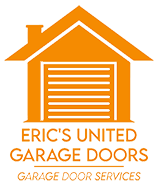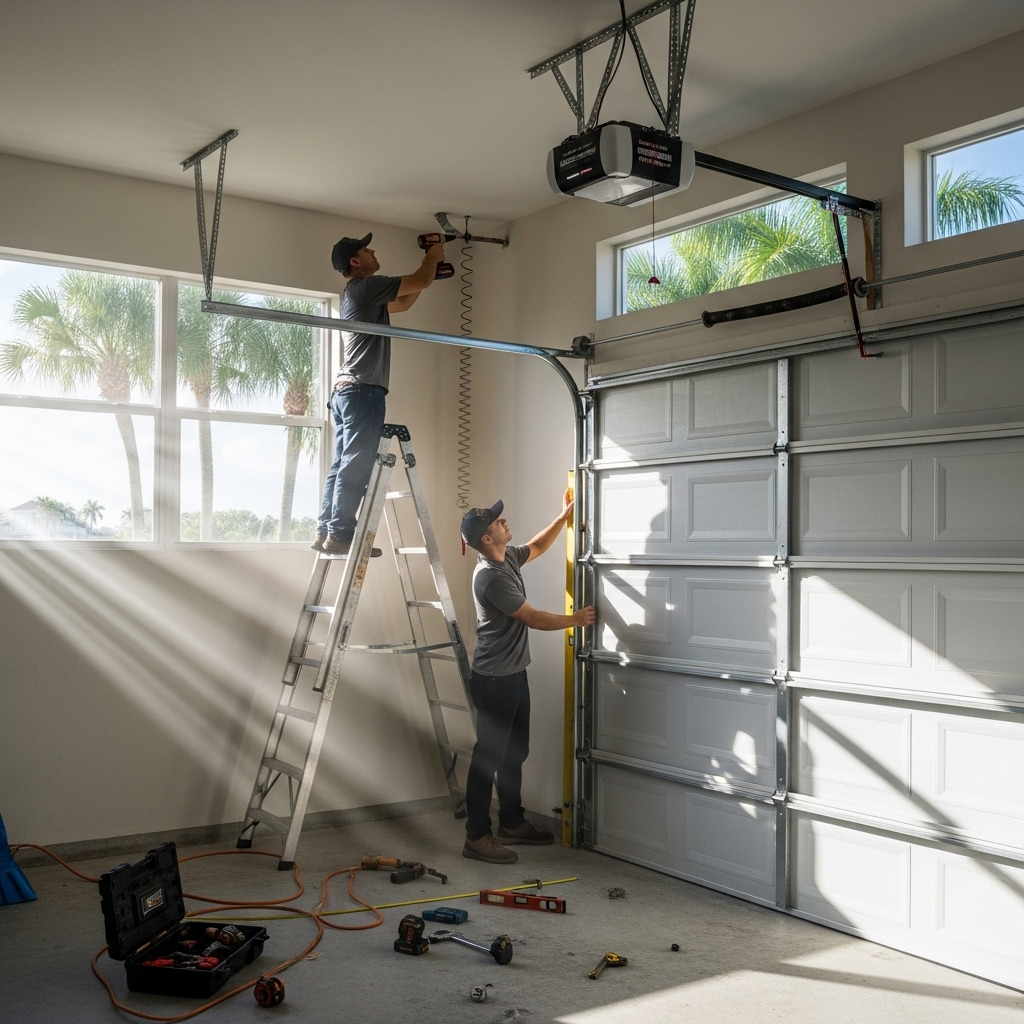Introduction
Garage door installation in Palm Beach County, Florida, blends aesthetics, safety, and code compliance with the realities of coastal weather. Whether you are building new in Palm Beach Gardens, replacing an aging door in Boca Raton, or upgrading a townhouse in West Palm Beach, the right planning makes the difference between a door that struggles and one that glides reliably for years. From wind-load ratings to opener selection, every choice affects performance and longevity. If you want a partner who understands local conditions and regulations, our experienced team can guide you from selection to final test, starting with a professional garage door service that aligns materials, features, and installation practices with your home and neighborhood.
This comprehensive guide explains the decisions you will face, how to evaluate materials and hardware, and what a high-quality installation looks like step by step. You will learn how coastal air influences corrosion control, why sensor placement matters, how to prepare your garage, and what to expect on installation day. By the end, you will have a clear roadmap that reduces surprises and ensures a beautiful, quiet, and safe result.
Understanding Local Codes and Wind-Load Requirements
Palm Beach County follows stringent building codes shaped by Florida’s wind events. Doors must meet specific wind-load ratings based on zone and exposure category, and reinforcement struts, track gauges, and fasteners are chosen accordingly. Your installer should provide documentation demonstrating compliance and should secure permits where required. Do not overlook the mounting substrate: framing must be solid, with anchors and lag screws sized to resist uplift and lateral loads.
Compliance is not just about passing inspection. It is about performance when storms approach. A door is the largest moving opening in your home; if it fails, pressure changes can threaten the structure. Investing in the right rating and a methodical installation is integral to safety and peace of mind.
Choosing Materials That Fit the Environment
Steel remains a popular choice for its strength and versatility. Galvanized and painted steel panels resist corrosion when cleaned and maintained regularly. Aluminum is lighter and naturally corrosion-resistant, suitable for wide openings and modern designs. Wood delivers warmth and architectural character but requires diligent finishing and care. Composites offer a balance of insulation, weight, and moisture resistance. Consider insulation values if the garage shares a wall with living spaces or if you use the space as a gym or workshop.
Hardware should be selected with the same care. Stainless or coated fasteners, high-quality rollers, and durable hinges pay dividends over time. Choose torsion springs sized to the door’s true weight and desired cycle life. In coastal areas, sealed roller bearings and corrosion-resistant tracks make a noticeable difference in longevity.
Pre-Installation Planning and Site Preparation
Accurate measurements are the bedrock of a smooth installation. Measurements should account for opening width and height, headroom, backroom, and side room. The ceiling structure must support the opener and any struts, and there should be a clear, level floor at the threshold for reliable sealing. If electrical work is needed for a new opener outlet, coordinate a licensed electrician before installation day.
Clear the garage area around the door, relocate vehicles, and remove items stored near tracks. If you are replacing an existing system, discuss disposal of the old door and hardware. Planning ahead avoids last-minute delays and ensures the crew can focus on precise alignment and calibration.
What to Expect on Installation Day
A professional installation follows a predictable flow. The team removes the old door and hardware if applicable, verifies framing integrity, and installs new tracks, brackets, and reinforcements to specification. Door sections are assembled, hinges fastened, and rollers installed. Torsion springs are mounted and carefully wound to correct torque, and lift cables are routed and seated properly in drum grooves. The opener is then installed or reconnected, and belt or chain tension is set according to manufacturer guidelines.
After assembly, the crew balances the door and tests travel limits, force settings, and safety systems. Photo-eye sensors are leveled and aligned, and the auto-reverse is verified through obstruction and contact tests. The final steps include sealing the perimeter, installing bottom weatherstrip, and confirming quiet, even operation.
Opener Selection and Smart Features
Choose an opener type based on your door’s size, weight, and your tolerance for noise. Belt-drive units are quiet and well-suited for attached garages. Chain-drive openers handle heavy doors reliably, while direct-drive and wall-mount options reduce vibration. Look for soft-start and soft-stop features, battery backup for outages, and Wi-Fi connectivity for alerts and remote control. Rolling code security and modern encryption standards protect your home from signal capture.
In a humid environment, consider enclosed motor housings and sealed electronics where possible. Program remotes, keypads, and smart integrations after final calibration, and test them again the day after installation to confirm stable performance.
Fine-Tuning Balance, Alignment, and Seals
A door that is perfectly balanced minimizes stress on the opener and reduces noise. Your installer should verify that the door stays in place when disconnected at mid-height. Track alignment must be plumb and square to the opening with consistent spacing. If the door rubs or binds, minor adjustments to track brackets and hinge positions resolve friction before it creates wear.
Perimeter and bottom seals help keep wind-driven rain and sand out. The installer should check for consistent contact along the threshold and adjust as needed. Proper sealing improves comfort and protects stored items from Florida’s humidity.
Quality Assurance and Final Walkthrough
Before the crew leaves, a thorough walkthrough should cover operation, safety features, and care tips. You should see a demonstration of manual release, understand how to test auto-reverse monthly, and know where to find the opener’s force and travel controls. The installer should also show you how to clean photo eyes and advise on a maintenance schedule suitable for the coast.
Ask about cycle life expectations for springs and rollers and review any documentation for wind-load compliance. A clear handoff ensures you can confidently operate and care for your new system from day one.
Post-Installation Maintenance Habits
Your new door will operate best with light, regular care. Wipe tracks to remove dust and salt, lightly lubricate hinges and rollers with a garage-door-rated product, and keep sensor lenses clean. Listen for changes over time; if new noises appear, they may indicate settling that needs minor adjustments. Test auto-reverse monthly and inspect the bottom seal for gaps that could allow water intrusion.
Plan a professional tune-up within the first year to re-verify balance, alignment, and hardware torque. Florida’s weather can shift components slightly; an early check-in catches small changes before they become issues.
Common Pitfalls to Avoid
Rushing measurements or overlooking headroom requirements can cause opener clearance problems and track misalignment. Choosing components based solely on appearance without considering wind ratings and hardware quality leads to premature wear. Skipping the permit process risks delays and noncompliance. Finally, failing to test safety systems thoroughly defeats the purpose of modern openers’ protective features.
Another pitfall is neglecting weather seals. A beautiful door that lets rain blow in will quickly frustrate you. Seal quality, threshold levelness, and a square opening are as important as the door panels themselves.
When to Replace Versus Repair
If a door has significant panel damage, chronic track issues, or outdated hardware that does not meet local wind requirements, replacement is usually the smarter long-term choice. New systems bring improved insulation, quieter operation, and enhanced safety features. If your opener lacks modern sensor technology or is incompatible with wind-rated reinforcement, an upgrade aligns the system for reliability and safety.
On the other hand, minor cosmetic flaws, worn bottom seals, or an isolated damaged roller can be addressed without replacement. A professional assessment clarifies where you stand and which path best serves your home and budget priorities.
Frequently Asked Questions
Q: How long does a garage door installation typically take? A: Most standard installations complete in a single day, with an additional visit if structural work or special-order parts are required.
Q: Do I need a permit in Palm Beach County for a door replacement? A: Many replacements require a permit, especially when wind ratings are involved. A reputable installer will handle the permitting and provide compliance documentation.
Q: What wind rating should I choose? A: Your property’s exposure, location, and code requirements determine the rating. Your installer should recommend the correct specification and supply proof of compliance.
Q: Which opener is best for attached garages? A: Belt-drive openers are popular for quiet operation, while wall-mount options reduce vibration and free ceiling space. Choose a model with battery backup for outages.
Q: How do I maintain my new door? A: Wipe tracks, lubricate hinges and rollers lightly every few months, and test auto-reverse monthly. Schedule a professional tune-up within the first year to confirm alignment and balance.
Q: Will my HOA have rules about door appearance? A: Many HOAs regulate color, window inserts, and style. Verify guidelines early to avoid delays and rework.
Q: Can I reuse my old opener? A: Possibly, if it is compatible with the new door’s weight and safety features. However, older openers may lack the safety, security, and smart features worth having in a new system.
Plan Your Palm Beach County Upgrade
A superior installation blends quality materials, precise alignment, and rigorous testing. When each step is handled by professionals who understand coastal conditions, you get a door that looks great and performs flawlessly season after season. If you are ready to evaluate options, compare wind ratings, and coordinate a smooth, code-compliant installation, schedule a consultation and let local experts handle the details. Start by arranging your professional garage door service so your new system is set up for quiet, safe, and dependable operation from day one.

